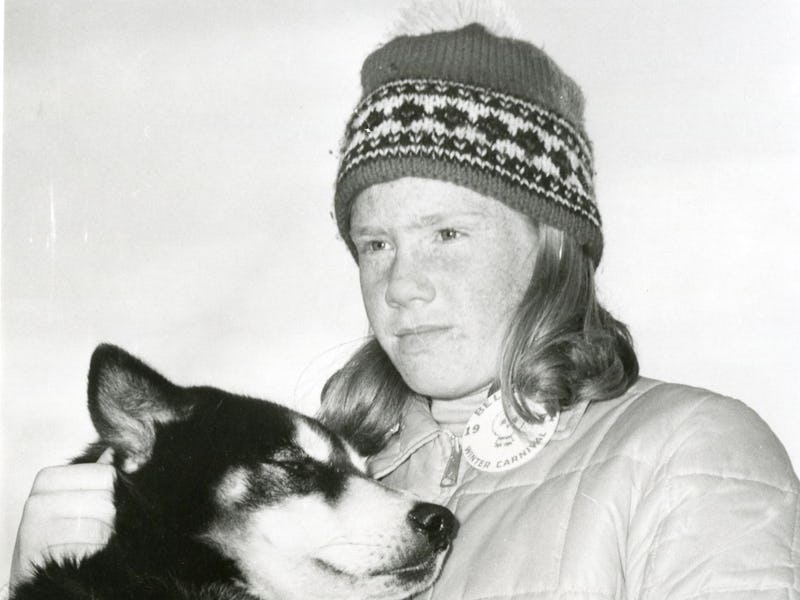Painfully Adorable Study Shows How Dogs Respond to Sobbing Humans
It takes more than just empathy, though.

If you ask any dog owner whether their dog knows when they’re sad, you’ll probably get the same response: Of course! And while the dog-haters may chalk this reaction up to dog owners having unrealistic attitudes about their dogs, evidence suggests that dogs actually display a startling degree of empathy for their humans. Scientists have found that dogs can understand our vocabulary and intonation, and they even yawn when we yawn. Now, research suggests that dogs will actively seek to comfort us when we’re distressed — but only if they can keep their cool.
In a paper published Monday in the journal Learning and Behavior, a team of researchers found that, when placed in an experiment in which their owners seem distressed, dogs will open a door to reach them much more quickly than dogs whose owners don’t seem distressed.
In the experiment, the dog’s owner sat on a chair in a small room separated from the dog by a clear door. The door was attached to its frame by weak magnets, so if the dog pushed on it, it would open, even if the dog was smaller. Owners were divided into two groups: an experimental group that cried and desperately asked for help and a control group that hummed “Twinkle, Twinkle, Little Star” and gently asked for help. The team, led by Emily Sanford, a graduate student in psychological and brain sciences at Johns Hopkins University, found that out of the 34 dogs in the experiment, 16 successfully opened the door to reach their owners. But among these dogs, the dogs whose owners were crying opened the door in about one-third of the time as the dogs whose owners were humming.
It’s a bit painful to watch, but it’s also pretty dang sweet.
The study’s authors say their results further the study of empathy and prosocial behaviors in dogs, and that these results extend beyond the simple door-opening behavior.
“The speed with which dogs opened indicates that they were sensitive to their owners’ emotional states,” they write. “That dogs were faster to open the door in the distress condition than in the control condition indicates that human distress commanded the dog’s attention and perhaps even conferred urgency to the dog’s actions, leading them to open more quickly if they opened at all.”
The researchers also measured the dogs’ emotional states during the experiment, both with heart rate monitors and by having the owners evaluate their dogs’ anxiety levels. Even though the researchers found very little difference between the number of dogs who opened the door during the control task and the experimental task — nine and seven, respectively — they found that the dogs in the experimental task who didn’t open the door were significantly more anxious and distressed than any of the other dogs in either experiment.
Researchers found that dogs whose owners seemed distressed were much quicker to try to help.
“In the control condition, opening was not related to the dog’s stress level and may have instead been motivated by curiosity or a desire for social contact,” the authors write.
After the helping experiment, the researchers gave the dogs an “impossible task” of getting a treat out of a sealed jar. The purpose of this experiment was to see how much the dogs looked at their owners when they were unable to do something. This, the study’s authors say, helped them evaluate the strength of the relationship between dog and owner.
The results of this task helped explain what had happened in the first experiment. Dogs that opened the door in the experimental group also looked at their owner for more time during the impossible task. This, the study’s authors say, suggests that the stronger bond between pet and owner could explain why these dogs opened the door when they thought their owners were distressed.
Notably, the dogs’ stress responses suggest that simple empathy isn’t enough. After all, the dogs who got the most stressed out about their owners’ cries were also the least successful at helping. But the dogs who suppressed those emotions, say the authors, were the most effective helpers when they saw their owner in need of help.
So maybe the most helpful dogs aren’t just the ones who know what you’re feeling but the ones who can also keep a cool head under pressure. So like us.